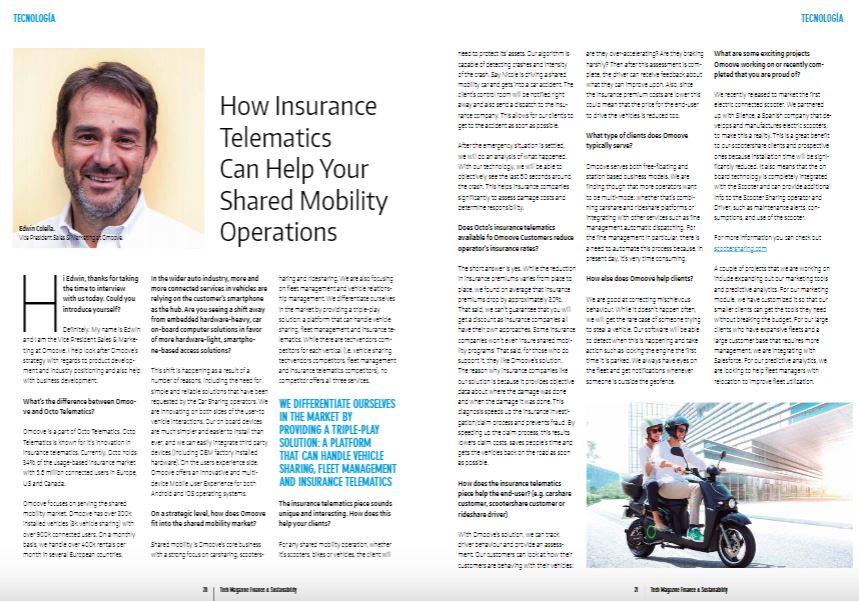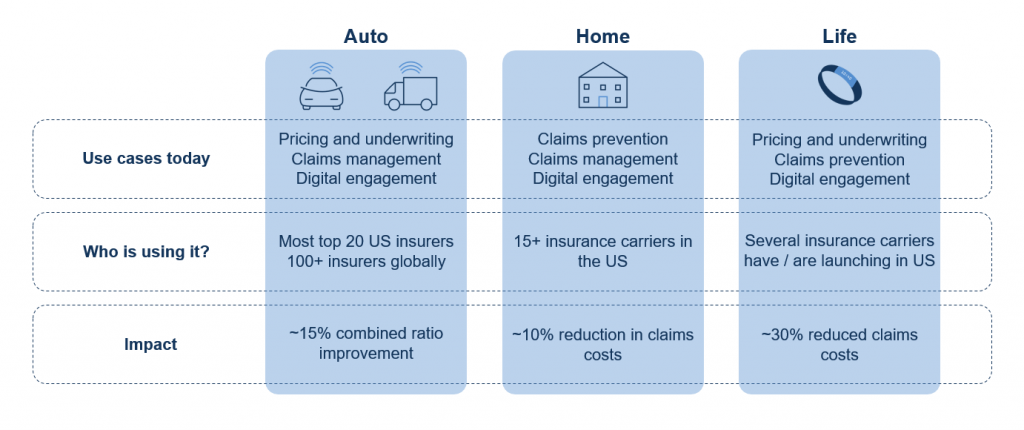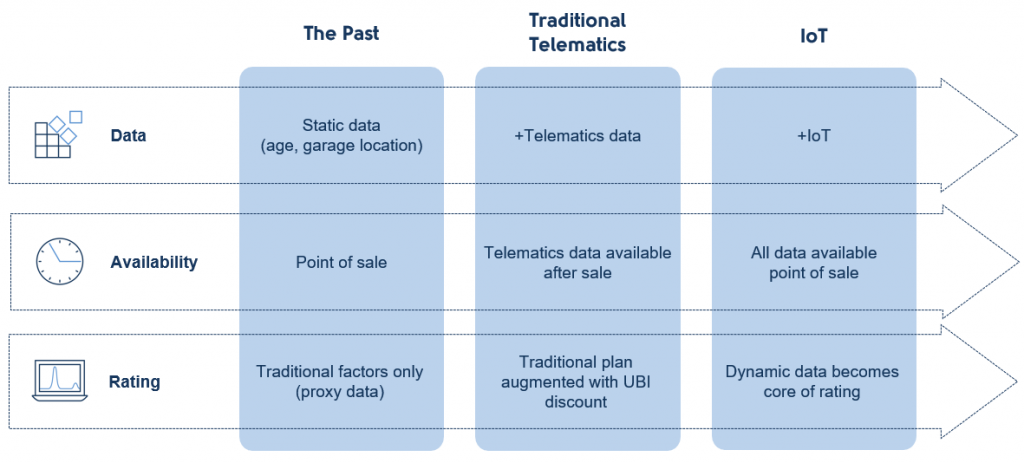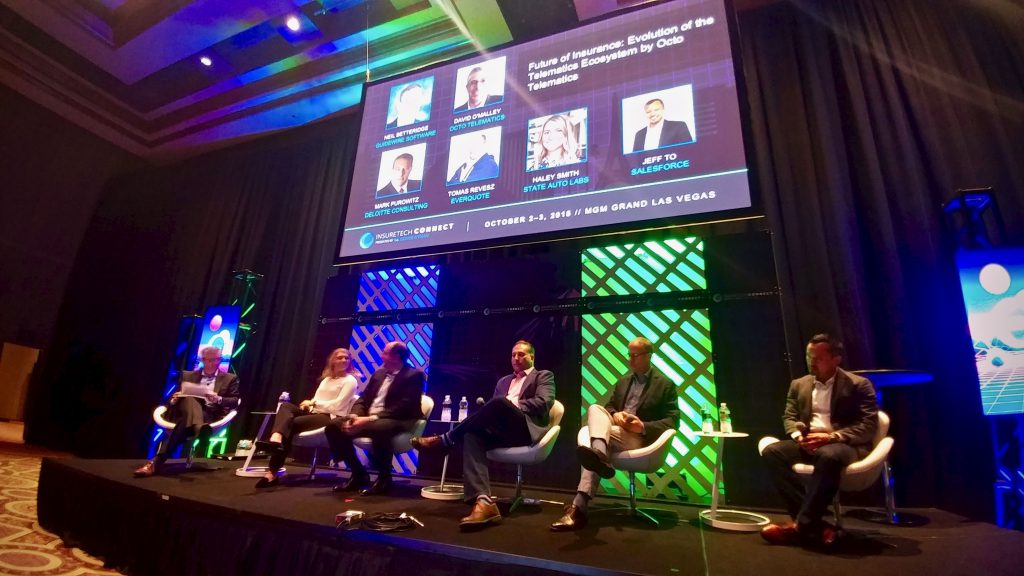
Connected insurance is a key strategic priority for most carriers, with 40% or more of insurers investing in a connected insurance product in the last few years. Insurers see connected devices as key to driving growth for the foreseeable future. Most of these initiatives are growing organically from within business lines. Each business line can separately realize significant value from pursuing a connected insurance strategy, but the organizational value of multiline connected insurance is more than a sum of its parts. An enterprise approach to connected insurance requires an IoT platform, tailored to the insurance industry, that can help insurers improve risk assessment and pricing, claims management, and customer management.
While point solutions add significant value major challenges can arise as connected insurance programs expand and mature, including high integration costs, fragmented customer data, device management and logistics inefficiencies, and restricted innovation.
Integration costs
Integration with core systems is a prerequisite for maximizing the value of smart devices and IoT data in insurance. This involves connecting sensors to policy administration, claims management, customer relationship management, marketing, and sales systems. While the feasibility of integrating one sensor into these core systems has been proven in the automotive, home, and life insurance business lines, effectively using many such sensors across all an insurer’s lines of business is incredibly complex. Insurtech implementation and core systems integration projects have led to a 24% increase in IT costs as a percentage of overall costs for insurers from 2012 to 2017.
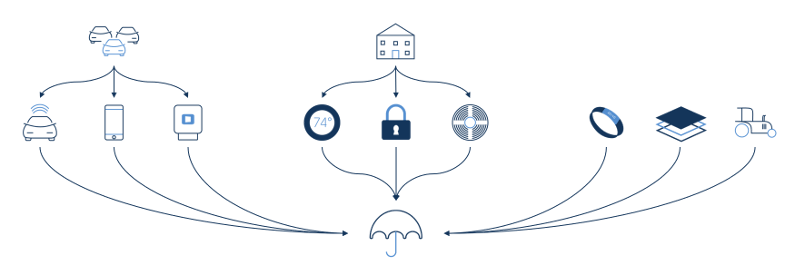
John Hancock, for example, launched their Vitality program in 2015, utilizing a Fitbit wearable to monitor health data. It wasn’t until 2017 that John Hancock integrated a second sensor, the Apple Watch, into their program.
An insurance IoT platform acts as a central integration point between insurers’ core systems and the IoT ecosystem. Insurers can integrate with the platform once and plug in or remove sensors as products evolve. The platform approach not only reduces integration costs but improves the level of integration between sensors. With an IoT platform acting as the engine for insurers’ connected insurance strategy, the addition of a new line of business, changes in IoT sensors or vendors, or even core systems upgrades can be managed without impacting an insurer’s connected products.
Fragmented customer data
Today, most insurance IoT initiatives are launched within a specific business line. A product manager proposes the initiative, selects a vendor, and begins building their product. These IoT vendors are focused on their specific sensor and business line and have built data collection, analysis, and storage processes that focus only on improving a specific outcome for that business line. This narrow focus leads to missed opportunities for using IoT data to improve other outcomes within that business line or to leverage this data at an enterprise level.
Insurance IoT platforms elevate connected insurance from a business-line strategy to an enterprise strategy. By integrating IoT data from across vendors, sensor types, and lines of business with data from policy administration, claims management, and customer engagement, insurers can get a 360-degree view of their customers. Key insurance functions such as pricing, underwriting, sales, marketing, product management, and customer support can all benefit from a complete picture of their policyholders. For example:
- Pricing and underwriting functions can benefit from multiline IoT data when performing risk assessment and pricing
- Customer service can more accurately diagnose and address issues if they understand policyholder behaviors
- Marketing and sales teams can leverage multiline IoT data for retention and upsell campaigns
- Product leadership can identify new multiline or multi-sensor product offerings by understanding how insurers are using connected products in conjunction with each other
Device management and logistics inefficiencies
Managing physical IoT sensors can be an incredibly complex proposition. As connected insurance strategies grow within business lines, processes and resources will be devoted to supporting the management and logistics of sensors. Each business line or sensor may have its own system for monitoring physical assets, shipping and receiving devices, and troubleshooting issues. This fragmentation can create significant process and logistics inefficiencies.
IoT devices, like all technology, need regular maintenance. Fragmentation can cause significant challenges in the coordination of IoT management. If devices are owned and operated by the insurer, they need a way to perform capability and security updates. If device updates from the device vendor cause a delay or break in service provision, insurers need to communicate that issue with customers.
An insurance IoT platform provides insight into the status of sensors that are critical for physical asset monitoring and customer relationship management. For example, program managers can understand the distribution of sensor types, firmware versions, or app versions across their book of business. Similarly, customer service has insight into device type and version for troubleshooting if a policyholder needs support.
Restricted innovation
Outside of wearable devices, where Xiaomi, Apple, and Fitbit dominate the market, most IoT verticals are incredibly fragmented. One IoT device or vendor is likely not enough to capture the market share needed to generate enough data for insurance use cases. As technology evolves, customer preferences and trends change. For example, while OBD-II devices (in the US) and black box devices (Europe) are still the primary technology used to monitor driving behavior for auto insurance telematics in the US, but smartphone-based monitoring has quickly emerged over the past few years. The vast investments insurers have made in specific sensors and vendors creates significant barriers to exploring new sensors, adding new business lines, and creating innovative connected insurance products. An insurance IoT platform allows insurers to integrate core systems once and plug into new sensors, vendors, or connected platforms in response to evolving consumer needs.
Fragmented IoT restricts innovation. With each vendor providing a unique set of information, data silos restricting data connectivity, and entrenched processes resisting change, innovation executives face challenges in understanding the relative value of connected insurance strategies. By integrating sensor data with both core systems and with other IoT sensors, an insurance IoT platform can significantly enhance the value of sensor data within a business line and across lines of business.
Read our new white paper Get Ready to Win in an Era of Insurance IoT for insight into how insurance carriers are using IoT across business lines and how an insurance IoT platform can help.
